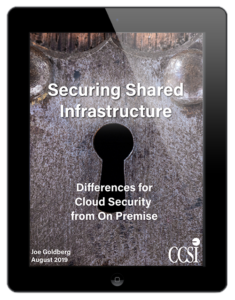How to Stop Data Breaches of Your Cloud Data
While cloud technology is pioneering the modern-day data storage world, and it’s known for being ultra-fast, ultra-secure, and offers casual users and businesses so much potential backed by so many benefits, that hasn’t stopped internet users with malicious intent from trying to gain access to your information.
Yes, cloud services are mainly secure, but that doesn’t mean the entire process of uploading and downloading your data is, and if you want to make sure there are no breaches in your business, you need to follow the advice below to ensure that everything is kept safe.
Always Encrypt Your Data
This should be a no-brainer, but you’d be very surprised by how many people simply don’t think about encrypting their data. Whether you’re storing data on your computer, in a server, in a local area network, or sending it across the internet, make sure every part of the process is protected by the best level of encryption possible.
Avoid Public Wi-Fi Connections
Public Wi-Fi hotspots are renowned for being unsecure because anyone can connect to them without needing a password, and there’s very little encryption on most public Wi-Fi hotspots. Ideally, you’ll just want to avoid them at all costs.
Of course, you can still use them for working, perhaps writing reports or dealing with certain project steps, but try to avoid being connected to them when you have access to what should be secure files, and don’t sign in, upload, or download sensitive documents or information that you don’t want to be breached.
Adopting a CASB Method
Known as a Closed Access Security Broker, a CASB method is a cloud-based third-party security provider that usually offers its services through an API-based solution. This is very important because API can be scaled in pretty much any way a business wants or needs it to be scaled.
What these third parties do is monitor the connections of a cloud storage location and try to limit the number of files that can be downloaded and distributed. If anything looks wrong, such as an ongoing breach, they can shut it down and prevent it from happening.
Self-Monitoring Traffic and Conducting Security Audits
Hand in hand with the point above, if you can’t afford a CASB solution, or you simply don’t want to use one, you can always monitor your cloud traffic yourself. You can register devices and name them, so you know exactly who is connected and what information is being accessed, and then seeing if anything doesn’t look right.
If someone accesses your network that isn’t supposed to be there, you can simply lock them out. Of course, this means you need to be checking at all times, or at least using some kind of automated system that will check everything on your behalf.
“There are some cons to the self-monitoring solution, such as a user repeatedly accessing information because they’re trying to work on a certain task, and then being locked out because it seems like suspicious activity when it actually isn’t. Still, this can be a very useful approach,” shares Taylor Menta, a tech blogger at Assignment Services and Studydemic.
Use the JEA Approach
“JEA, or Just Enough Access, means that users who have access to your cloud data only have access to the data that they specifically only need access too, rather than simply having access to everything, even if they don’t need too. This is mainly the default businesses use when setting up cloud services,” explains Tina Harper, a journalist at Assignment Help and Academized.
This means you’re dramatically reducing the chance that if there’s a breach on one person’s account, such as having a slack password, your entire system, and cloud data collection isn’t compromised.
Remember to Back Everything Up
Just like you should be doing with all online and digital data anyway, you need to make sure everything is backed up in a separate location that isn’t connected to your original and main cloud data. You should back up regularly and ensure this is all secure, ideally on a physical drive that no one else has access too.
This means that even if you follow all the steps above and you still, somehow, get a breach that compromises all your data, you can simply access your backup to ensure you still have access to everything, and your business doesn’t have to suffer.
Securing Shared Infrastructure
Differences for Cloud Security from on Premise
Cloud computing is different from traditional on premise IT. The cloud is a shared infrastructure and when using shared infrastructures, organizations do not control much of the technology that underlies the cloud services they engage, especially networking. Shared infrastructures have their own security considerations that should be assessed before embracing the cloud.

Author Bio: Beatrix Potter is a tech writer at Essay Writing Services and State Of Writing Review. Beatrix writes about cloud data breaches; she also is an online writer at the Top assignment writing services in Queensland website.
Beatrix is a guest blogger. All opinions are her own.
The post How to Stop Data Breaches of Your Cloud Data appeared first on CCSI.
*** This is a Security Bloggers Network syndicated blog from CCSI authored by Guest Author. Read the original post at: https://www.ccsinet.com/blog/data-breaches-cloud-data/





